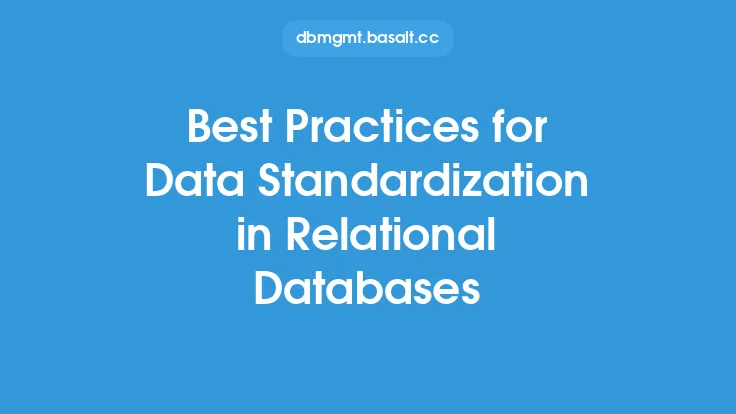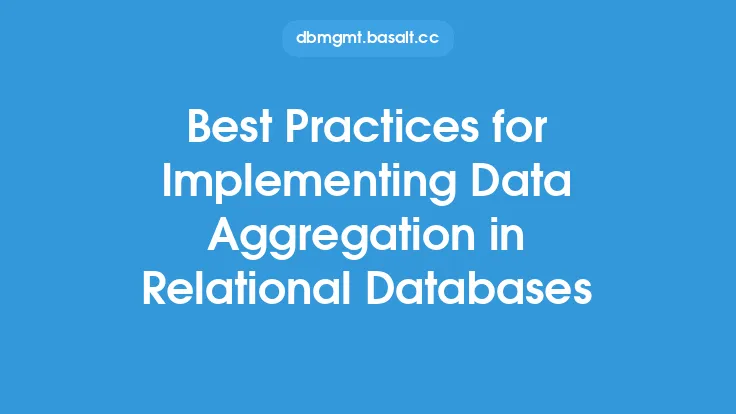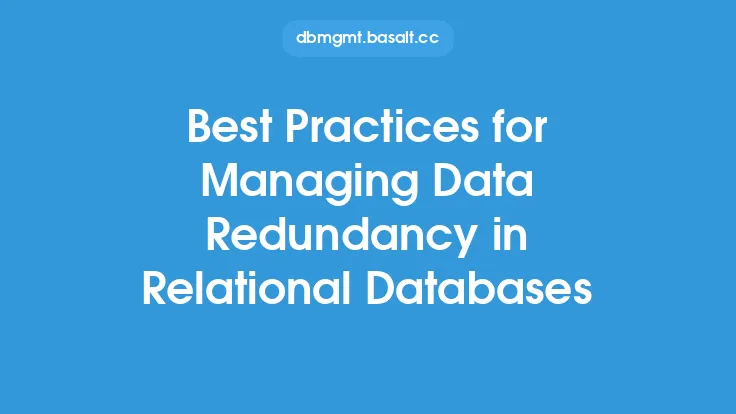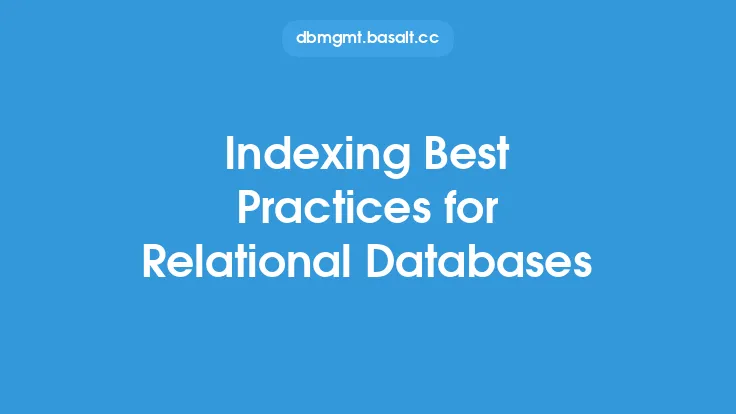When designing and implementing a relational database, one of the most critical aspects to consider is the formatting of data. Proper data formatting is essential to ensure that data is stored efficiently, accurately, and consistently, which in turn enables reliable data retrieval, manipulation, and analysis. In this article, we will delve into the best practices for formatting data in relational databases, providing a comprehensive guide for database administrators, developers, and data analysts.
Introduction to Data Formatting
Data formatting refers to the process of organizing and structuring data in a way that makes it easily accessible, readable, and usable. In relational databases, data formatting involves defining the data types, formats, and constraints for each column in a table. This includes specifying the data type, length, precision, and scale for numeric and date/time columns, as well as defining the format for character and string columns. Proper data formatting helps to prevent data inconsistencies, errors, and ambiguities, ensuring that data is accurate, complete, and reliable.
Data Type Selection
Selecting the appropriate data type for each column is crucial in relational databases. Each data type has its own set of characteristics, such as storage requirements, precision, and scale, which affect how data is stored and processed. Common data types include integers, floating-point numbers, characters, strings, dates, and timestamps. When choosing a data type, consider the following factors:
- The type of data being stored (e.g., numeric, text, date)
- The range of values the data can take (e.g., integer, decimal)
- The precision and scale required for numeric data
- The length and format of character and string data
- The storage requirements and performance implications of each data type
Data Length and Precision
Defining the correct data length and precision is essential to ensure that data is stored accurately and efficiently. Data length refers to the maximum number of characters or bytes that can be stored in a column, while precision refers to the number of digits or characters that can be stored in a numeric or date/time column. When defining data length and precision, consider the following:
- The maximum value that the data can take
- The minimum value that the data can take
- The number of decimal places or digits required for numeric data
- The format and length of date/time data
Data Constraints
Data constraints are rules that are applied to data to ensure its accuracy, consistency, and integrity. Common data constraints include:
- Primary keys: uniquely identify each row in a table
- Foreign keys: establish relationships between tables
- Unique constraints: ensure that each value in a column is unique
- Check constraints: enforce specific conditions or rules on data
- Default constraints: provide a default value for a column when no value is specified
Data constraints help to prevent data errors, inconsistencies, and ambiguities, ensuring that data is reliable and trustworthy.
Data Normalization
Data normalization is the process of organizing data in a database to minimize data redundancy and dependency. Normalization involves dividing large tables into smaller, more manageable tables, and defining relationships between them. The benefits of data normalization include:
- Improved data integrity and consistency
- Reduced data redundancy and duplication
- Improved data scalability and flexibility
- Enhanced data security and access control
Data normalization is essential in relational databases, as it helps to ensure that data is accurate, complete, and reliable.
Indexing and Partitioning
Indexing and partitioning are techniques used to improve the performance and scalability of relational databases. Indexing involves creating a data structure that facilitates quick lookup and retrieval of data, while partitioning involves dividing large tables into smaller, more manageable pieces. The benefits of indexing and partitioning include:
- Improved query performance and response times
- Reduced storage requirements and disk space
- Improved data management and maintenance
- Enhanced data security and access control
Indexing and partitioning are essential in relational databases, as they help to ensure that data is accessible, manageable, and secure.
Best Practices for Data Formatting
To ensure that data is formatted correctly and consistently in relational databases, follow these best practices:
- Use standardized data formats and conventions
- Define clear and concise data definitions and documentation
- Use data constraints and rules to enforce data integrity and consistency
- Normalize data to minimize redundancy and dependency
- Use indexing and partitioning to improve performance and scalability
- Regularly review and update data formats and definitions to ensure they remain relevant and effective
By following these best practices, you can ensure that your relational database is well-organized, efficient, and scalable, and that your data is accurate, complete, and reliable.
Conclusion
In conclusion, proper data formatting is essential in relational databases to ensure that data is stored efficiently, accurately, and consistently. By selecting the appropriate data type, defining the correct data length and precision, applying data constraints, normalizing data, and using indexing and partitioning, you can ensure that your data is reliable, trustworthy, and accessible. Following best practices for data formatting, such as using standardized data formats and conventions, defining clear data definitions, and regularly reviewing and updating data formats, can help to ensure that your relational database is well-organized, efficient, and scalable. By prioritizing data formatting and following these guidelines, you can unlock the full potential of your relational database and make informed decisions with confidence.





